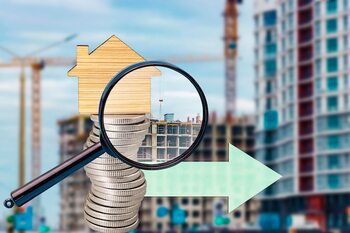The Effect of Education on the Value of Your Property

Education is a fundamental pillar in the valuation of a property. It's not just about bricks and mortar; the educational environment directly influences the demand for housing, thereby increasing its value. In Costa Rica, where educational quality can be a key differentiator, understanding how nearby institutions impact the value of your home is essential for any homeowner or investor. In this article, we will break down the elements that link education with location and the economic future of your real estate.
The Relationship between Education and Residential Value
Education has a significant impact on property valuation, as families seek to reside in areas where educational quality is high. Proximity to recognized schools and universities not only enhances a property's appeal but also serves as a deciding factor for future buyers. Often, homes located near prestigious educational institutions may experience higher demand, resulting in higher prices in the real estate market. This is especially relevant in countries like Costa Rica, where the competition for access to quality education can be intense.
In addition to the immediate aspect of demand, the relationship between education and residential value is also related to local economic development. Communities with good schools tend to attract young families and educated professionals, which in turn fosters a prosperous environment. This dynamic not only promotes a strong sense of community but can also lead to the growth of local businesses and additional services, further increasing the appreciation of surrounding properties. Therefore, investing in a home located near good educational institutions is not only a decision based on immediate family needs but also a smart strategy to secure the future value of the property.
2. Educational Areas: Where to Invest?
The location of a property can be decisive in its valuation, especially when it comes to educational areas. Investing in neighborhoods close to reputable schools and universities not only increases the demand for housing but also attracts families that prioritize their children's education. Well-established educational institutions are a magnet for buyers, as they provide a sense of security and stability in their children's academic future. Therefore, properties located in these neighborhoods often maintain or increase their value over time, making them a smart investment.
Additionally, it is essential to consider the educational diversity that an area offers. Proximity to different types of institutions—from kindergartens to technical training centers and universities—can be a determining factor for many families. Areas with a variety of educational options tend to attract a broader spectrum of residents, fostering a dynamic and ever-growing environment. Thus, property owners and investors should research not only the academic qualifications of local schools but also their reputation and the programs they offer, as this directly influences the neighborhood's appeal and, consequently, the future value of the property.
3. The Impact of Public vs. Private Schools
The type of school closest to a property can significantly influence its value, as families are often willing to pay more to live near recognized educational institutions. Public schools, which generally receive government funding and offer inclusive programs, can attract a wide spectrum of residents. However, perceptions of educational quality vary by locality. In communities where public schools have a good reputation and offer attractive programs, property values tend to increase due to high demand from families seeking access to a strong public education.
On the other hand, private schools are often seen as a status symbol and a sign of superior educational quality. These institutions can offer specialized curricula or innovative teaching methods that attract a particular segment of the real estate market. Proximity to these schools can increase the appeal of certain areas, leading homeowners to be willing to invest more in their properties to secure a place in these exclusive educational communities. In this sense, both public and private schools play a crucial role in the valuation of the real estate market, creating unique opportunities for homeowners and investors looking to maximize the value of their properties based on the available educational environment.
4. Key Indicators of Educational Quality in Residential Areas
Key indicators of educational quality in residential areas are fundamental elements that can significantly influence the perception and value of a property. These indicators include the graduation rate, student academic performance, school infrastructure, as well as the experience and training of the teaching staff. An educational environment that stands out for its excellence not only attracts families looking for the best for their children but also fosters a sense of community and well-being, factors that often translate into an increase in real estate value. Properties located near recognized educational institutions tend to experience higher demand in the market, which can lead to constant appreciation.
Additionally, the diversity of educational programs offered by local schools is another key indicator to consider. Institutions that provide bilingual education or innovative approaches to pedagogy often capture the interest of parents who are conscious about their children's academic and professional future. Likewise, extracurricular activities and resources available for students can contribute to the overall appeal of the residential area. Homeowners and investors should pay attention to these aspects, as an enriching educational environment not only enhances the quality of life in the community but also becomes a differentiating factor when selling or renting a property.
5. How to Attract Young Families to Your Property
Attracting young families to your property can be an effective strategy to maximize its value, and education plays a crucial role in this dynamic. Families seek environments that not only offer comfortable housing but also access to quality educational institutions. To make your property more appealing, consider highlighting the proximity to recognized schools and innovative educational programs. Additionally, you can promote extracurricular activities available in the community, such as sports and arts, that complement the holistic development of children. A robust educational environment is a magnet for young parents who prioritize the well-being and development of their children.
Another important aspect is creating a welcoming family environment within the property itself. This involves not only the physical design of the home but also how it is presented to potential tenants or buyers. Spacious and functional areas, nearby recreational spaces, and a good connection to public transportation are features that young families highly value. Additionally, organizing community events or collaborating with local schools can foster a sense of belonging in the neighborhood, which is appealing to those looking to settle in a place where their children can grow up happy and safe. In summary, connecting your property with the educational and social needs of young families can significantly increase its demand and enhance its value in the real estate market.
6. Real Estate Market Trends Related to Education
The relationship between the real estate market and education has become increasingly evident, especially in areas where quality educational institutions are accessible. Families seek to settle near prestigious schools, universities, and vocational training centers, which raises the demand for properties in those areas. As a result, neighborhoods close to these educational centers tend to experience an increase in their property values. This not only affects the immediate price of homes but can also influence long-term appreciation, making these areas attractive investments for homeowners and investors. Additionally, the trend toward continuous learning and vocational training has led to growth in educational infrastructure. New schools and academic programs arise to meet the changing needs of the labor market. This expansion not only enhances the educational offering but can also revitalize entire communities, increasing their appeal for those looking to purchase a home. In this regard, those interested in investing should pay attention to new educational initiatives being implemented in their area; these can be key indicators of the future economic and social development of the neighborhood.
Finally, it is important to consider that educational quality is not only measured by students' academic performance; it also encompasses aspects such as extracurricular activities and community programs that enrich the social environment. Buyers are increasingly interested in how these opportunities can benefit not only their children but also the overall well-being of the community. Therefore, those owners and investors who understand this interrelationship between education and real estate value will be better positioned to make informed decisions about their assets and maximize their investment in real estate.
7. Success Cases: Increases in Property Value Due to Proximity to Educational Institutions
Proximity to renowned educational institutions can be a decisive factor in the appreciation of a property. In several locations, it has been documented that houses located near quality schools and universities tend to increase their value significantly compared to other similar properties that do not have this advantage. For example, in communities where new schools have been established or existing ones have been improved, housing prices have shown a notable increase. This is not only due to the demand generated by families seeking access to higher education for their children, but also to the interest of investors who appreciate the potential for long-term appreciation.
An emblematic case is that of neighborhoods that have experienced demographic growth due to the opening of university campuses. These areas tend to attract young professionals and students, which boosts commercial development and improves local infrastructure. Properties in these zones not only increase in price due to housing demand but also offer opportunities for lucrative rentals. Moreover, various studies show that homes near educational institutions tend to have a shorter time on the market, thus reflecting a competitive and desirable environment for buyers. Undoubtedly, considering proximity to educational centers can be a key strategy for maximizing real estate investment.
8. Strategies to Enhance the Value of Your Property through Education
One of the most effective strategies to enhance the value of your property is to invest in the education of your community. By engaging in local educational initiatives, such as tutoring programs or partnerships with schools, you not only improve the immediate environment but also help create a sense of belonging and commitment among residents. Properties located in areas with a strong focus on education tend to be more attractive to potential buyers and renters, which can lead to an increase in home value over the long term. Moreover, by fostering a solid educational culture, a positive cycle is generated that benefits both students and homeowners.
Another key strategy is to stay informed about nearby educational institutions and their developments. The quality and reputation of schools can be decisive in the home buying decision. Therefore, considering data on academic rankings and extracurricular programs can give you a significant advantage when evaluating or promoting your property. For example, if there are plans to improve or expand schools in your area, this could translate into increased interest from potential buyers. Additionally, building relationships with these institutions can open doors to collaborations that further highlight the educational appeal of the neighborhood, thereby strengthening the perception of real estate value.
9. Future Perspectives: The Growing Role of Education in the Real Estate Market
The real estate market is constantly evolving, and one of the factors that promises significant growth is education. As families look for not only a place to live but also an environment that ensures a prosperous future for their children, properties located near quality educational institutions are becoming increasingly attractive. This trend not only affects current demand but also establishes a solid foundation for the long-term increase in property values in those areas. Education is becoming an essential criterion in the purchasing decision-making process, highlighting its direct influence on the market.
Furthermore, the growing role of education in the real estate market goes beyond access to good schools; it includes innovative educational programs and communities committed to academic development. Areas that offer resources such as community libraries, educational workshops, and cultural centers tend to be more desirable, which can translate into greater appreciation of real estate value. In this context, homeowners and investors must consider not only proximity to traditional educational institutions but also evaluate how these initiatives can enrich their environment and contribute to the overall appeal of their property in the future. The connection between education and valuation is set to strengthen even further as our society progresses towards greater investment in training and personal development.
10. Testimonials: Owners Who Experienced Increases Due to Better Educational Options
The testimonies of homeowners who have seen an increase in the value of their property due to proximity to quality educational options are revealing. Many of them share that, when considering the purchase of a home, one of the most determining factors was the availability of recognized schools and colleges in the area. These homeowners have not only enjoyed the immediate benefit of residing near well-regarded educational institutions, but they have also observed how the demand for their homes has increased significantly, allowing them to achieve considerable appreciation when they decide to sell. The connection between education and property appreciation thus becomes a key point for those looking to maximize their investment.
Additionally, various studies have shown that families are willing to pay more for properties located in districts with good schools, which translates into a notable increase in long-term value. Satisfied homeowners mention how this educational aspect has not only provided them peace of mind knowing their children are receiving a good education, but has also generated a tangible economic return when it comes to appraising their home. Ultimately, these testimonials highlight the importance of considering the educational environment not just as a social or cultural factor, but as an intelligent financial strategy to secure and increase property value over time.



